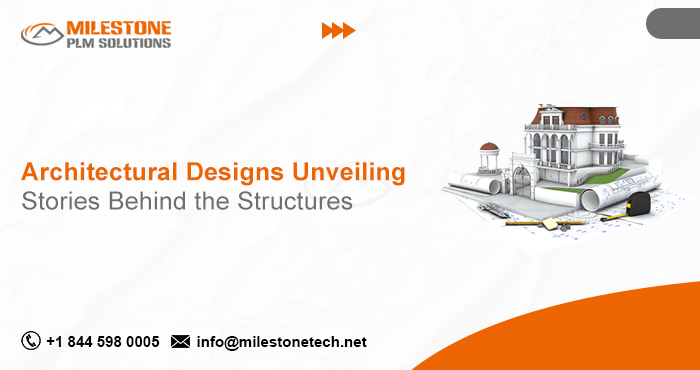Architectural Designs- Unveiling the Stories Behind the Structures

We often admire architectural marvels – the towering skyscrapers that pierce the clouds, the majestic temples that whisper of ancient traditions, or the cozy cafes that beckon us in with their warm ambience. But have you ever stopped to consider the stories these structures hold within their walls? Architectural designs are more than just bricks and mortar; they are silent storytellers, weaving narratives of culture, history, and human ingenuity.
From Inspiration to Reality: The Spark of Creation
Every architectural design begins with a spark – a burst of inspiration that ignites the architect’s imagination. This inspiration can stem from anywhere: the harmonious flow of nature, the bustling energy of a city, or even a personal experience. Architects are keen observers, constantly drawing influence from the world around them. The curvature of a seashell might inspire a building’s form, the interplay of light and shadow in a forest could influence the design of windows, or the social dynamics of a community might shape the layout of a public space.
Beyond Aesthetics: Function Meets Form
While aesthetics play a crucial role, architectural design is not solely about creating beautiful structures. The guiding principle of “form follows function” ensures that buildings not only look impressive but also serve a specific purpose. A hospital, for instance, will prioritize functionality, with patient flow and efficient use of space being paramount. In contrast, a museum might prioritize aesthetics, creating an environment that enhances the visitor’s experience with the art on display.
Cultural Tapestry: Reflecting the Times
Architectural styles are like chapters in a city’s story. Gothic cathedrals with their soaring stained-glass windows speak of a time of religious devotion, while Art Deco skyscrapers with their sleek lines and geometric patterns embody the optimism and technological advancements of the early 20th century. By examining the architecture of a place, we can gain valuable insights into the values, beliefs, and technological capabilities of the society that built it. The Taj Mahal, for example, is not just a monument to love; its intricate details and use of precious materials reflect the opulence and artistic prowess of the Mughal Empire.
The Human Touch: A Story Etched in Stone
Architectural designs often hold within them stories of the people who created them. The architect’s personal experiences, cultural background, and design philosophy all leave their mark on the final structure. Take, for instance, the works of Antoni Gaudí, the architect behind Barcelona’s Sagrada Familia. His whimsical and organic style, inspired by nature and religious symbolism, is a reflection of his unique artistic vision.
Building Stories for the Future
As the world evolves, so too does architecture. Today, architects are not just concerned with aesthetics and functionality; they are also considering sustainability and environmental impact. Green building practices and energy-efficient designs are becoming increasingly important, shaping the way we build for the future. By incorporating these elements, architects are ensuring that the stories told by our structures are not just about the past but also about a vision for a more sustainable tomorrow.
Unveiling the Stories: How to Read Architecture
The next time you find yourself marveling at a building, take a moment to look beyond its surface. Look for the hidden stories – the way light interacts with the structure, the materials used, the details that might seem insignificant at first glance. Here are a few tips to help you “read” architecture:
- Consider the context: Where is the building located? What is the surrounding environment like? How does the structure fit into the existing landscape?
- Analyze the form: What is the overall shape of the building? Are there any recurring geometric patterns? How do these elements contribute to the function and aesthetics?
- Pay attention to details: What materials were used? Are there any decorative elements or symbols? What do they tell you about the purpose of the building or the culture that built it?
By actively engaging with architectural design, we can unlock a deeper appreciation for the built environment around us. We can start to see buildings not just as static structures but as vibrant narratives waiting to be explored. So, the next time you walk down a street or stand in awe of a magnificent structure, remember – there’s a story waiting to be heard.
Follow Milestone PLM Solutions for AEC Industry Updates, CAD Tips and Global Construction News.
Milestone PLM Solutions with its exclusive delivery center in India is a global CAD, BIM outsourcing partner serving the needs of the AEC industry since 2004. MILESTONE focuses on the unique needs of clients and believe in tackling real-life problems with efficiency, smooth and ease.
The MILESTONE team can assist you with DD Set, CD Set, BIM Modeling, Rendering, walk through and more. We support multiple BIM software including AUTOCAD REVIT, Architecture cad, Cabinet Vison, Vector works etc. Our approach is to provide a dedicated team for each customer over ongoing project and deliver the quality output consistently.
With our state of art technology and large talent pool of Engineers & Architects, we are developing best in class solutions for our customers across the globe. We align with your culture and values to form unbreakable partnerships and are primed for success with over 100 employees and 150 customers in the US, Europe, India, and Asia.
You can email us at info@milestonetech.net and can log in to our website www. milestonetech.net to know more about our services and our work portfolio or contact us on +1-844-598-0005
